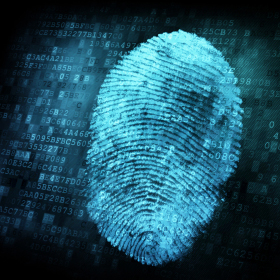Many Different Types of Biometrics
Biometric authentication, commonly known as biometrics, is the identification process involving humans and their unique traits and characteristics. Several types of biometrics are used in computer science and biology for access control and species identification. Law enforcement agencies use innovative types of biometrics for surveillance and identification of suspects. Different identifiers are used for each of the different types of biometrics. In fact, there are two main categories of identifiers: physiological identifiers and behavioral identifiers. Physiological identifiers refer to biological aspects of the body that are unique. For example, fingerprints, face recognition, hand geometry, iris recognition, DNA, and scent recognition are all physiological identifiers. Behavioral identifiers include gait, voice, and typing rhythm. The varied aspects of human physiology, behavior, and chemistry yields several types of biometrics.
The functionality of the different types of biometrics are measured by: acceptability, performance, measurability, permanence, uniqueness, and universality. Acceptability refers to the general public’s willingness to use their physiological traits for identification purposes. Measurability refers to how easy it is to acquire and numerate these specific human traits for identification. Uniqueness refers to how rare a specific pattern occurs in nature. For example, every fingerprint is unique to each individual. Permanence determines whether the trait will change over time. If fingerprints changed or evolved throughout a person’s lifetime, it will be very difficult to use it as one of the types of biometrics. Performance relates to the technology being used to collect the biometric information. Because of the large pool of human beings, it is important to use a tool that effectively quantifies unique traits. Finally, universality means that every subject should possess a specific trait in one form or the other. Because every human being has a fingerprint, fingerprinting has become one of the most widely used types of biometrics in law enforcement.
Fingerprinting
Fingerprint recognition is one of the most commonly used types of biometrics. Fingerprints have always been considered an accurate identification method amongst human beings since no two fingerprints are alike. Ridge endings on a person’s fingers are used to identify each individual. When a crime is committed, law enforcement officers scan the crime scene for fingerprints and match the fingerprints with a central database. The non-evasive nature of fingerprint recognition has made it a very popular choice for biometric authentication.
Voice Recognition

DNA
DNA analysis is the most accurate type of biometric authentication. Each individual has a unique DNA signature, making it almost impossible to confuse two people. Unlike voice recognition, people can’t change their DNA sequence on command. However, critics that oppose DNA sampling for biometric purposes cite privacy issues. In addition to identification, DNA can also give away genetic information like susceptibility to cancer and diabetes, which may pose a major privacy risk.
The Price of the MinuteHound Time Clock
Time Clock Calculator
See For Yourself Why MinuteHound Is Top Dog. Compare Our System Vs Others

MinuteHound Types of Biometrics.
We are confident in our business. Be just as confident in yours.
Call (800) 351-7237 MinuteHound today!
TimeClock@MinuteHound.com
